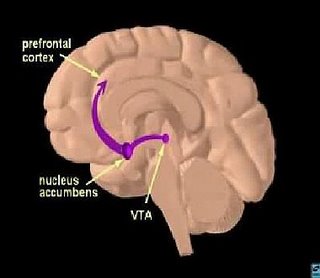Fibromyalgia IS In the Head After All
Fibromyalgia IS In the Head After All
Fibromyalgia affects about two per cent of the population, women more so than men. The disease involves the enhancement of pain impulses, leaving sufferers highly sensitive to pain, which is both chronic and diffuse. Previously, the causes of the disease were unknown, and there were no objective measurements of the way the CNS processes pain. _SDOf all the pain syndromes, Fibromyalgia can be one of the most frustrating. The patients often seem to be depressed, anxious, and personally ineffectual. Treatment with antidepressants -- traditionally tricyclic antidepressants such as amitriptyline -- has been useful for managing the problem. But is it possible that the depression, anxiety, and helplessness are the result of the chronic pain, and not the cause? Swedish researchers have taken a deep look into the brain, at the foundations of Fibromyalgia.
In one of the studies presented in the thesis, subjects had both thumbs pressed hard enough for them to feel the same degree of mild pain as healthy controls. Using functional magnetic resonance imaging (fMRI), researchers could show that the subjects had the same level of activity in the parts of the brain that deal with emotions as well assensory information from the thumb, regardless of which group they belonged to. However, the subjects with fibromyalgia had lower activity in a brain area that inhibits the experience of pain.There may be many more than trillions of ways that humans experience the world differently, due to the combinatorial explosion of genetic and epigenetic mechanisms involved in turning biochemistry into conscious reality. Fibromyalgia is a relatively common -- and frequently disabling -- manifestation of human biodiversity via genetic and / or epigentic variability. How many uncounted other ways do we experience reality differently from each other, due to the quirks of our genes?
According to the team, treatment with drugs that work on the central nervous system (CNS), such as SNRI antidepressants, are effective against fibromyalgia. But this is not a question of treating depression but of other properties of these drugs.
"The patients who had had their pain symptoms for the shortest amount of time were those that responded best to the drug treatments tested," says Karin B Jensen. "This shows how important it is that fibromyalgia is detected and taken seriously as early in its development as possible."
Her thesis also confirms the existence of a relationship between genetics and pain regulation. Studies of healthy people revealed a relationship between a specific genetic variant and the effect of a morphine-like drug on repeated pain stimulation. The results suggest that the gene under study only affects the body's pain regulating system in the presence of greater psychological stress. This knowledge, say the researchers, could one day make possible the development of customised medical treatments and thus better and more effective pain relief. _SD
Labels: brain imaging, Pain







